3 quick tips to turn your bowl of home-made noodles into a restaurant-beautiful dish【SoraKitchen】
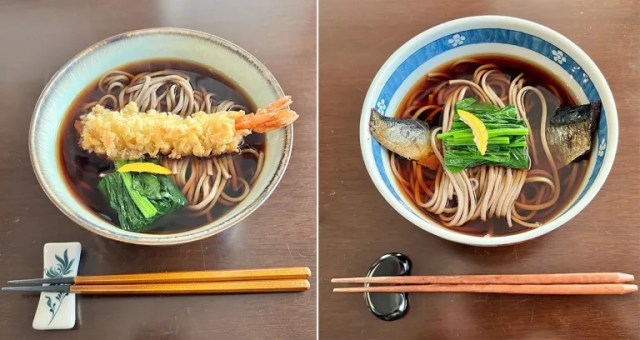
Our certified chef shares a trio of tips that anyone can do/will be impressed by.
There’s a beautiful simplicity to Japanese art, and that sensibility extends to the presentation of Japanese food. Even something as simple of a bowl of noodles can be made into an elegant feast for the eyes, if you know how to do it, and the process is probably easier than you think.
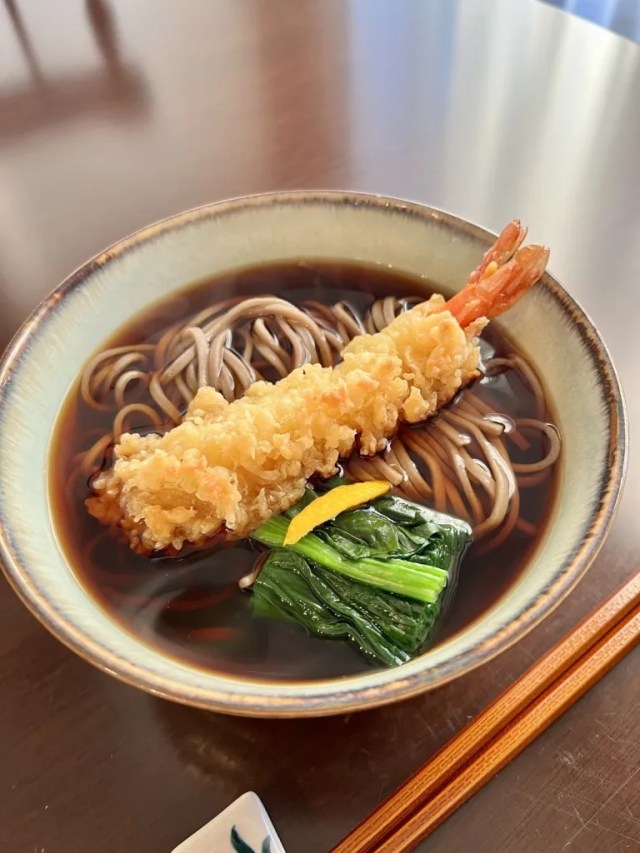
For example, that exquisitely arranged bowl of soba (buckwheat) noodles pictured above? That’s not from some fancy restaurant, but from the home kitchen of our Japanese-language reporter, Go Hatori.
▼ That’s Go on the left, with his head sticking out of a double-occupancy bodysuit during a recent sumo wrestling bout that took place in the SoraNews24 office.

Now, we should point out that in his younger days, Go spent three years working in a Tokyo soba restaurant, earning a professional cook’s license in the process.
▼ Go’s certification and accompanying placard
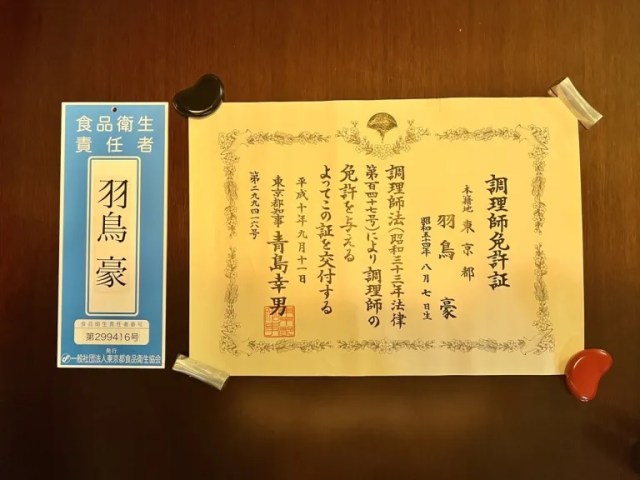
However, the tips he’s sharing today for beautiful noodle presentation don’t require years of restaurant experience of any high-level certifications. Instead, he’s got three quick pointers that will help transform your home-made noodles from a shabby looking unappealing mess into a mouthwatering marvel to gaze upon.
Go was especially keen to share these tips because of Japan’s toshikoshi soba (“year-changing soba”) culinary custom. As we’ve discussed (and happily experienced), pretty much everybody in Japan eats fried chicken on Christmas Eve, but there’s also a traditional food you’re supposed to have on New Year’s Eve: soba, with the folk wisdom that the long length of the soba noodles are symbolic of a long life, and so eating them on New Year’s Eve will bring you good health in the year to come.
As long as you’re eating buckwheat noodles on New Year’s, they count as toshikoshi soba, so the specific toppings are up to you, but Go will be going over some of the most popular, spinach, yuzu, and shrimp, for this soba beautification process.
● Tip 1: Preparing the spinach and yuzu
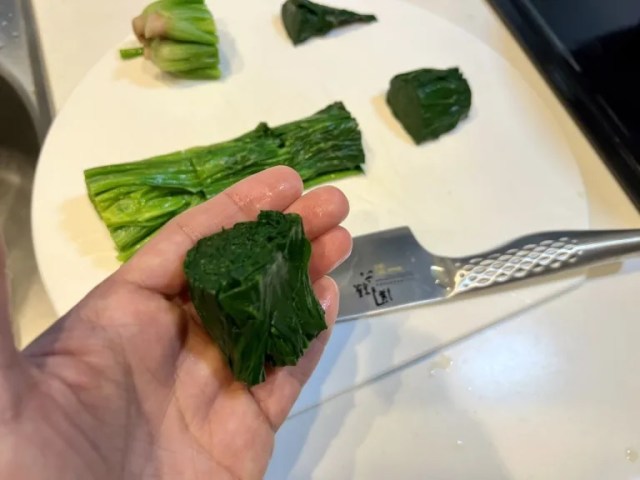
Spinach is a common soba topping, since it adds both nutrients and color. Go chose to prepare his ohitashi-style, simmering the vegetable in a mixture of dashi (bonito stock), soy sauce, and mirin (sweet cooking sake), but if you want to just boil it, that should work too.
Once the spinach is cooked, dunk it in a bowl of cold water (Go added some ice cubes to get his extra cold). Then squeeze the spinach firmly to drain off excess moisture, and chop it into bite-sized stacks, as shown in the bottom-right photo below.
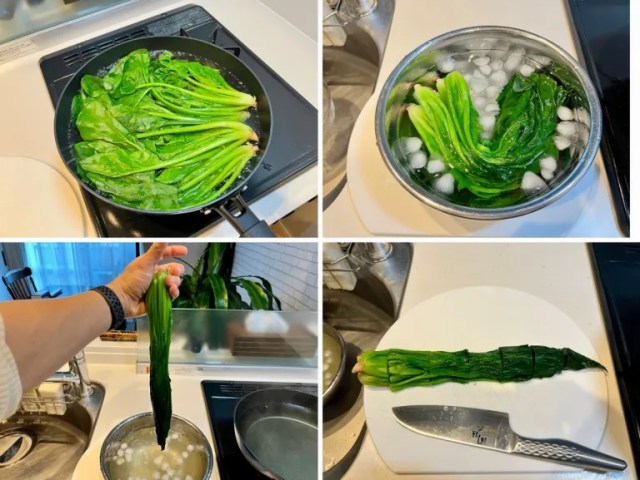
This will help the spinach retain its shape and color, and you can even freeze the portion you won’t be using right away for a future meal.
Next, if you can get your hands on it, Go says to pick up a yuzu, a type of Japanese citrus fruit.
▼ Yuzu can be found at Japanese produce stands for as little as 100 yen (US$0.70).
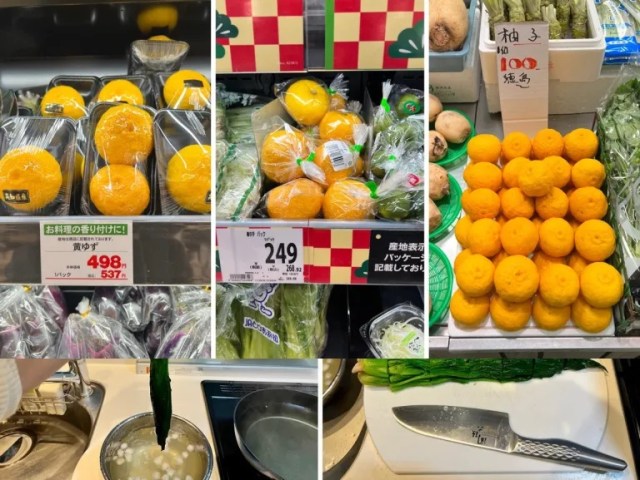
Yuzu have a refreshing flavor, somewhere like a mix of orange and lemon, not as sweet as the former yet not as sour as the latter. The peel is also edible, and enticingly fragrant, and that’s the part we’re going to use to add a little extra dash of color to our bowl of noodles, plus enhance the aroma as steam rises from the hot broth.
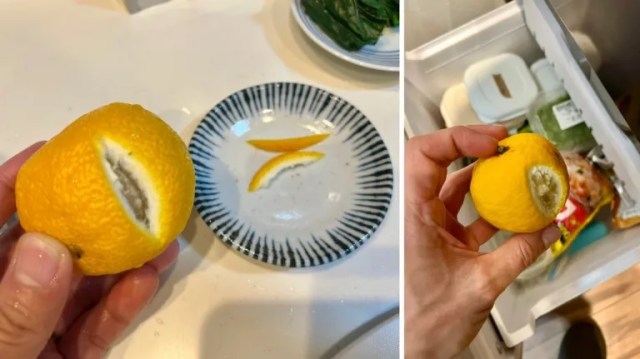
Using a knife, cut a notch into the yuzu peel, then slice it into two small strips. This will leave you with a lot of leftover yuzu, but this too can be frozen, either for future bowls of soba or to use as a seasoning for other types of food and even drinks, such as a mixture of yuzu juice and honey.
● Tip 2: Crisp up that shrimp
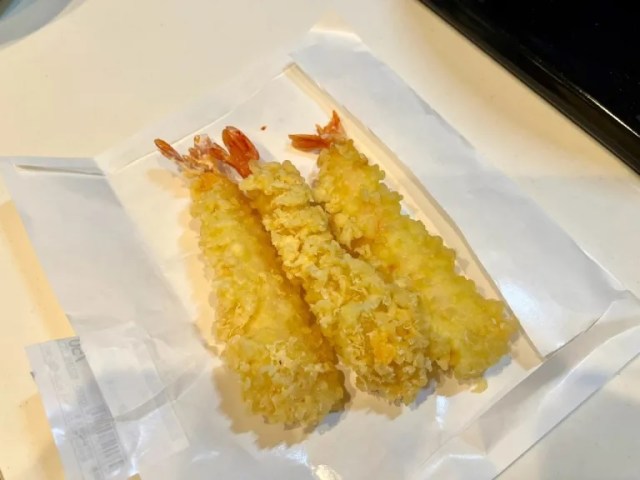
Unless you’re using shrimp right out of the frying pan, odds are they’re going to be looking a little limp. That’s especially true if you’re using pre-made tempura shrimp, like the ones sold at Japanese supermarkets, which are convenient but often not as visually impressive.
But that’s OK! You can give your tempura shrimp a glow-up by heating it up in a toaster oven.

You’ll want to keep a close eye on it, Go says, because there’s a fine line between crisping/firing up the shrimp and burning it, especially since the shrimp itself is already cooked at this point. That watchfulness will be rewarded, though, with a firmer, more even texture.
● Tip 3: The lift-and-fold technique
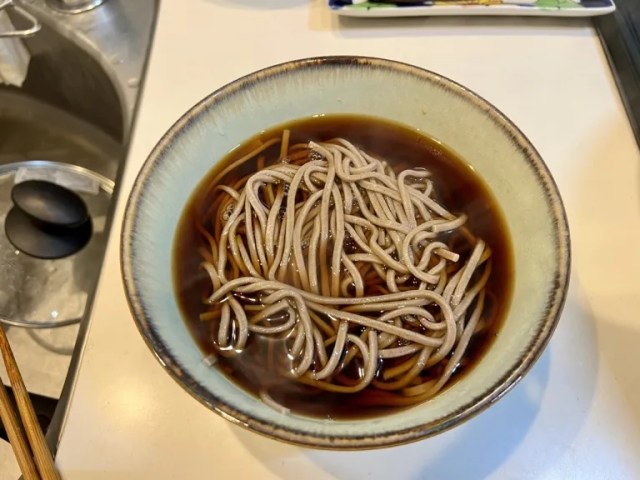
This, Go says, is the most important pointer to remember, and it’s also the simplest. Take a look at that bowl of soba directly above? See how careless and haphazard it looks, with noodles floating every which way in the broth? There’s an easy way to fix that.
Using a pair of chopsticks (long cooking chopsticks work best for this), simply pick the noodles up…

…and put them back in the bowl, folding them gently back on themselves in the process.
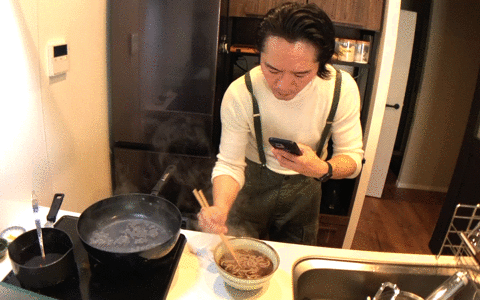
The result?
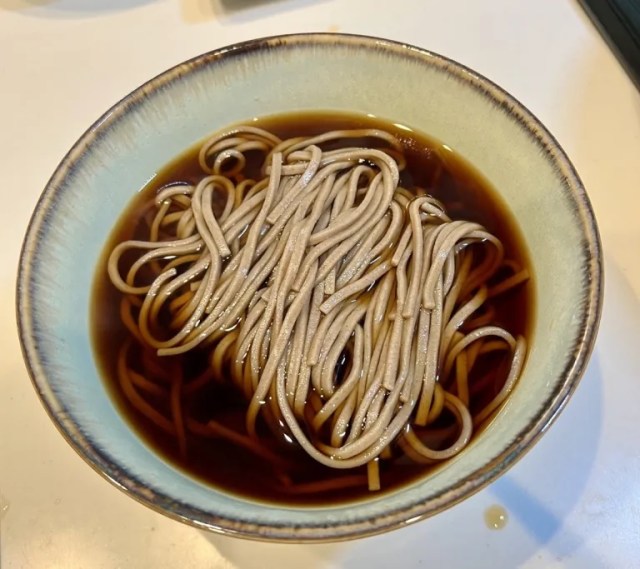
A much more uniform sense of visual flow, which creates a more eye-pleasing backdrop as we add the shrimp…
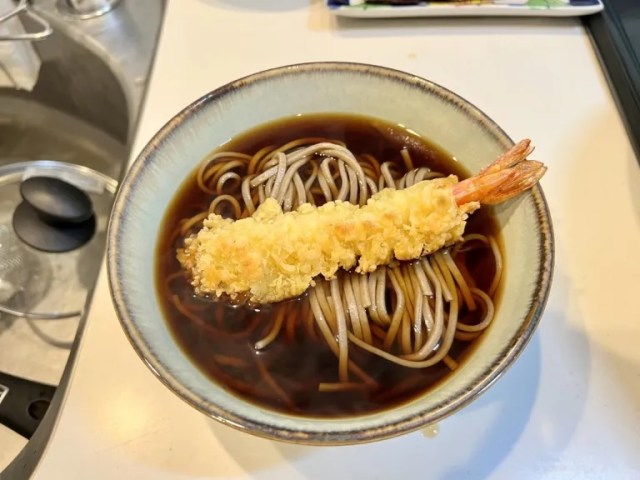
…and then the spinach and yuzu, placing them so that no single ingredient completely obscures another, and signaling to our stomach, through our eyes, the various flavors we’re about to enjoy.
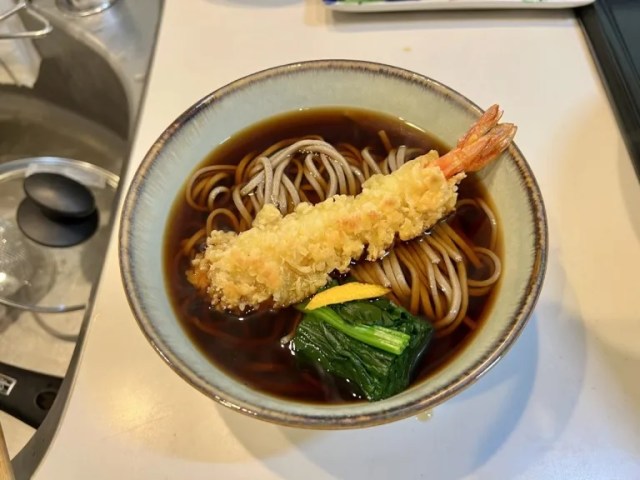
As a side note, this lift-and-fold technique also works for Japan’s other beloved long-noodle types, ramen and udon, so you can use it to make those look their best too.
As for the process of cooking that soba itself, it’s pretty self-explanatory. Any store-bought pack of uncooked soba will tell you how long to boil it in water (typically somewhere between one-and-a-half to three minutes) after which you heat up the broth separately and add the noodles. Soba broth bases are commonly available at Japanese markets, and are usually cut with water, with a 1:1 ratio producing a very strong flavor and most people adding more water until the taste suits their palate.
While he was at it, Go also whipped up a bowl of nishin (“herring”) soba, a variant that’s especially popular in Kyoto.
▼ Messy noodles
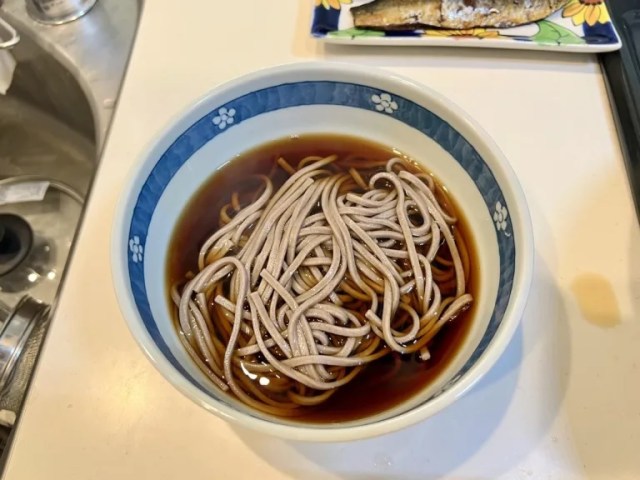
▼ Lift and fold…
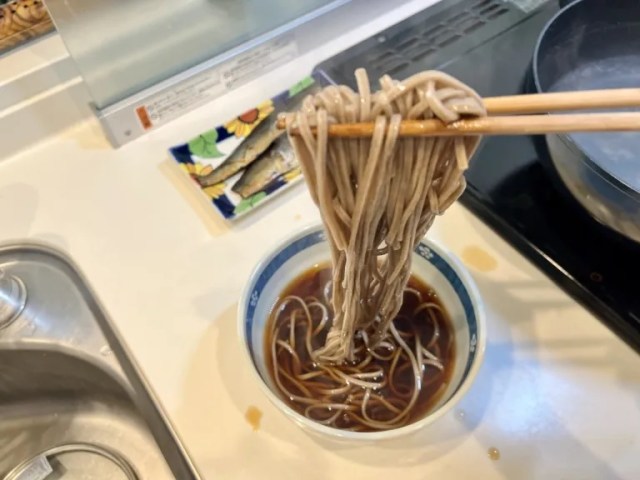
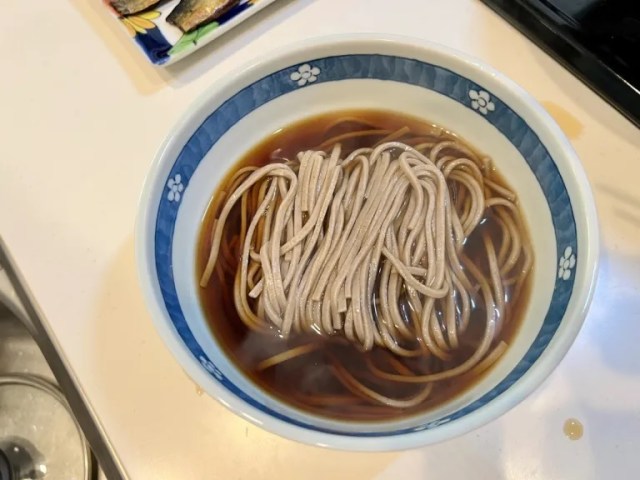
▼ …slide in the grilled herring…

▼ …and add the spinach and yuzu.
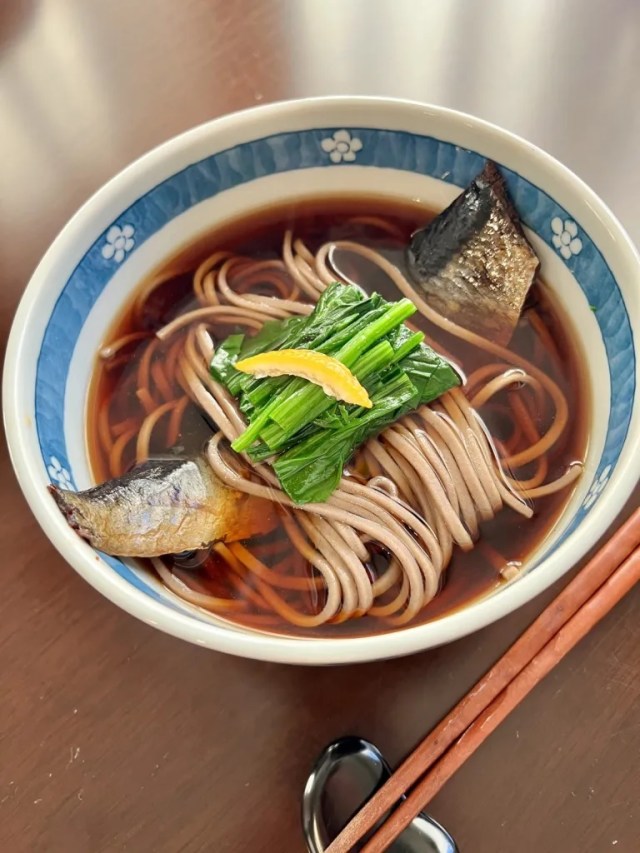
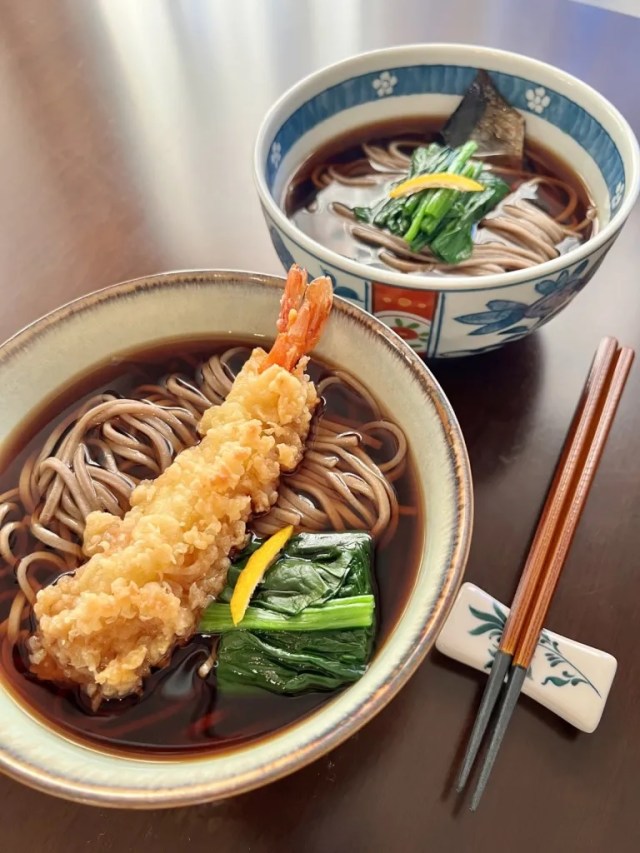
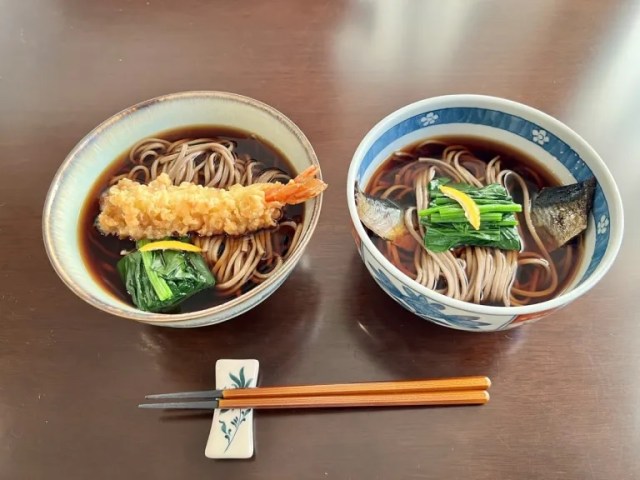
As a side note, none of Go’s advice is something that Japanese etiquette requires you to do, and we’ll be the first to admit that when our growling stomachs are demanding we feed them ASAP, we’ve been known to just plunk everything into a bowl and start chowing down without spending even a second looking at it. But if you’ve got a few moments and are looking to impress someone, including possibly yourself, with how beautiful you can make a bowl of noodles look, these little tips can make a big difference.
Photos ©SoraNews24
● Want to hear about SoraNews24’s latest articles as soon as they’re published? Follow us on Facebook and Twitter!
Credit:

0 comments: